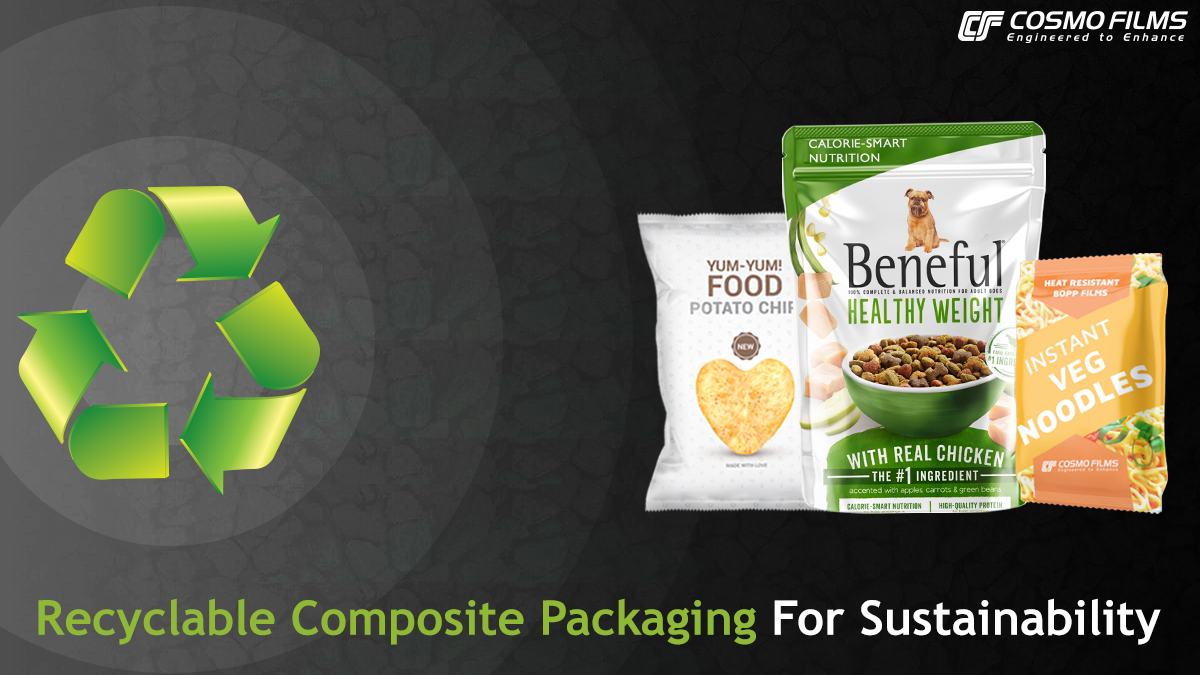Love to hear from you!
Get in touch.

The use of plastics has posed significant concerns for environmental experts. It has become a constant struggle for companies to choose the right packaging for their products, which is both durable & environment-friendly. Going back to the traditional rigid packaging is not only costly but has its share of impact on the environment too as it needs much more storage. To understand better, we can say that 1 truckload of flexible packaging equals 26 truckloads of rigid packaging. This could substantially bring down the pollution released during transportation of products & reduce our environmental footprint. But how do we manage the plastic waste produced from flexible packaging? We cannot deny the drawbacks of plastic for the environment. Even so, when the industry started moving towards recyclable solutions to facilitate a circular economy, we faced another problem of Composite Packaging. Scroll down for all the details.
What is Composite Packaging?
Before discussing environmental consequences & solutions, let’s first know what composite packaging is. Just like the name suggests, Composite packaging is made when we combine two or more substances to create one that can be used for packaging products. The aim is to bring together the unique properties of different materials in one product, resulting in enhanced durability, elasticity & versatility. Some of the most common examples of Composite packaging are Paper-polyethylene, Plastic-aluminum, Plastic-Paper-Aluminum, and Cardboard-polyethylene. Composite packaging has many benefits, including:
While composite packaging has taken over the industry with its attractive features that protect the packaged products & increases their shelf lives, it has also created an obstacle in our movement towards the circular economy.
Composite Packaging & Circular Economy
Composite packaging has become a challenge to the recycling process since it contains multiple layers of metals, plastics, or papers combined with wax or resins. Thus, to recycle, we need to separate these materials. This stage poses a difficulty as there are high chances of the final recycled product being contaminated. The materials tend to pollute one another and make it impossible to recycle profitably. The current recycling facilities globally are under-equipped to handle composite packaging due to lack of profitability. As a result, such packaging often tends to end up in the trash, hampering a circular economy. That said, we cannot abandon its use considering the benefits it offers.
Recycling Solutions For Composite Packaging
The need of the hour is to find out innovative recycling solutions. We cannot rely on traditional methods, especially when there is no one type of composite packaging. Many international companies have already started working in this direction by implementing small-scale solutions. They’ve found out ways to separate composite materials or even consolidate them into one to form new packaging material.
While recycling solutions are on their way, it’s the responsibility of packaging companies, too, to produce easy-to-recycle solutions. This is why we, at Cosmo Films, have molded our business to provide an answer to this problem.
Cosmo Films: A Part Of The Solution
Cosmo Films is a polypropylene player, producing a range of BOPP and CPP films. Both can be used as single- and double-layer structures. These are also used in combination resulting in mono-material laminates that are easy to recycle and do not compromise on aesthetics or durability. BOPP and CPP, when used together, serve the purpose of packaging big & bulky products. Some specific products require the inclusion of PE; although it results in a 3 layer composite structure, all the materials belong to the same poly-olefin family, thus facilitating recycling.
Further, the company has engineered the perfect substitute for aluminum foil with its ultra-high barrier films. It is partnering with various global brands to provide energy-efficient & environment-friendly solutions.
Conclusion
As a responsible producer of specialty films, Cosmo Films is making every effort possible to ensure sustainability. It follows best-in-industry practices at the manufacturing units & offices to ensure the reuse & recycle of products, which altogether helps in reducing the consumption of resources. The aim is to make a greener tomorrow. Click here to know more about Cosmo Films’ sustainability program.
Featured Post
Love to hear from you!
Get in touch.